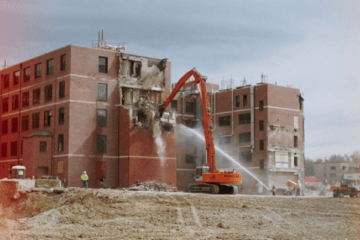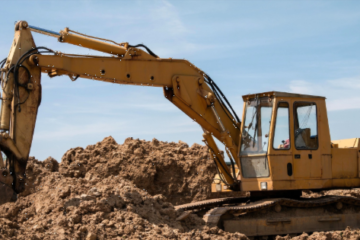With a market share of around 10%, the U.S. is the second largest construction market in the world. Prior to most construction work getting underway, the site usually requires excavation. This involves preparing the entire area by grading and digging trenches to remove materials such as rock, soil, and debris from a construction or demolition site. Heavy equipment including backhoes and bulldozers are typically used in this process.
Excavation companies carry out this essential task by first preparing the site. In this assessment stage, residential excavation companies or commercial excavation contractors will examine the area to measure its bounds and create a detailed plan.
From knowing how to dig around underground utility facilities and avoiding groundwater damage, here are some frequently asked questions that should help you understand the importance of construction excavation.
What is excavator grading?
Grading is a process by which excavators ensure that your project has a level base or a correct slope. This helps protect the property as properly graded sites allow for water to flow away from the structure so that it doesn’t saturate the ground near the foundation. If a site isn’t graded properly, cracking, structural damage, and soil erosion can occur. It’s important that water is diverted properly in order to avoid soil erosion or flooding on neighboring properties.
To ensure the prevention of water damage, grading plans are often compiled by a civil engineer and use methods that include swales and graded slopes which carry away groundwater and precise soil deposit.
How are pools excavated and constructed?
When installing an in-ground pool, the process begins with excavating a hole that mirrors the size, shape, and floor configuration of the pool. The pool’s shell is then constructed against the excavation site and this shell functions as a form for the pool.
What is brush clearing?
Brush clearing is an essential step of any construction task. If an area is full of debris, there could be all kinds of issues that arise. Brush clearing typically involves removing unwanted brush, stump removal, rock breaking, and mulching trees.
How do excavators work around underground utilities?
First, all relevant drawings and maps of the area must be collected so that excavators can determine where any underground utility facilities may be located. This may involve seeking out the plans for any previous structures and the utilities’ own blueprints and maps.
What are some examples of demolition?
Excavation companies perform several types of demolition including acquiring all of the necessary permits and inspections and carrying out pool removal, extracting structures from tight spaces, and the safe tearing down and removal from of existing structures.
If you want to learn more about this essential construction process or want to hire professional demolition and excavating professionals, give Medford Excavation a call right away!


